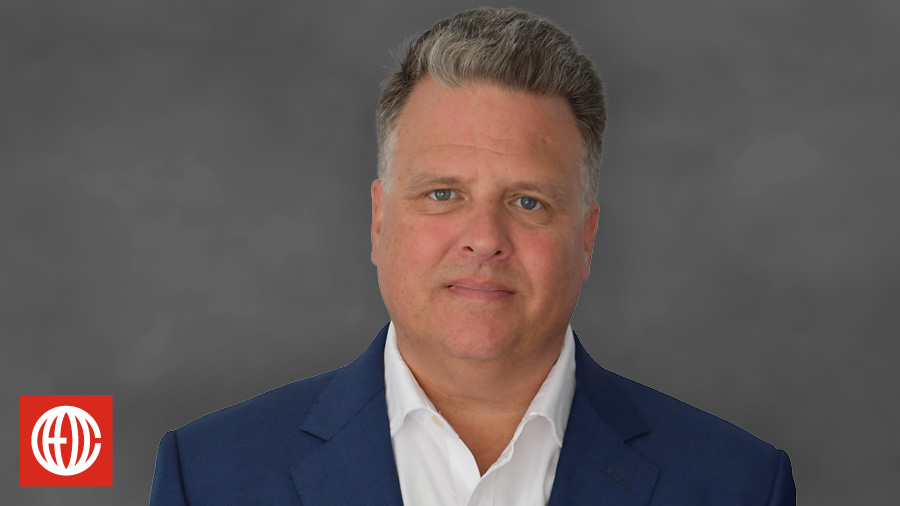
Guest: Jean-Louis Guillou, a coach at CEO Coaching International. Jean-Louis is a former professional tennis player and performance coach who became a global senior executive with over 20 years of experience scaling operations and future-proofing business models at Fortune 500 and startup companies. Jean-Louis is also an active member of YPO.
Quick Background: In business, as in sports, only extremely gifted high achievers make it to the BIG leagues. But in that rarified air, what separates the merely good from truly great?
On today’s show, Jean-Louis Guillou digs into the mental aspects that drive peak performance across all disciplines and explains how CEOs can quiet the noise that could be preventing them from Making BIG Happen.
Keys to Peak Performance from Jean-Louis Guillou
1. Reduce interference.
Tim Gallwey, one of the founding fathers of modern sports psychology, says that “Performance equals potential minus interference.” Jean-Louis Guillou adapts this principle into his performance framework by encouraging CEOs to maintain focus on the task at hand, with as little prejudgment as possible.
“Interference begins to occur once your mind starts to dwell on what has already happened,” he says, “or starts to speculate about what might occur in the future. It’s taking you away from the present moment. Or it goes into judging mode. ‘Oh no, this isn’t good, I’m just not good enough. I’m not smart enough.’ I think everyone knows that their best thinking, their best performance occurs when they’re able to stay calm and keep their attention to here and now without getting lost. All this judgment basically is anathema to peak performance. You have to be able to be here in the present. Yes, you want to achieve a certain outcome. But you also have a little bit of equanimity there, a little bit of detachment. It’s more falling in love with the process. Having a clear desired outcome is great, but you really have to fall in love with the process and not get too obsessed with the outcome. That tends to be unhelpful to being in your best mindset.”
Another form of interference that many CEOs struggle to tune out is the tendency to micromanage. Our Stop-Start-Continue tool can help leaders regain that clear focus that Jean-Louis is describing. And it can also shed some light on structural inefficiencies that are causing CEOs to spread themselves thin, from outdated “best” practices to underperforming subordinates.
2. Visualize and plan ahead.
In the middle of a race at the 2008 Beijing Olympics, swimmer Michael Phelps’ goggles filled up with water. He was forced to swim blind … And he still won the gold medal and set a new world record.
How?
In his preparation for the race, Phelps had already visualized every conceivable variable, good and bad, and prepped his response.
“Phelps knew how many strokes it would take to reach the other end of the pool,” Jean-Louis Guillou says. “So he basically swam and won that race blind, and at the end of the race, he takes the goggles and he throws them in disgust. But that’s something that had he not rehearsed ahead of time, it could have caused him to panic and to go into reaction mode. The mind does not like surprises. And that’s where visualization really becomes critical.”
So far, the 2020s have given CEOs quite a few surprises to contend with, from a pandemic and cancel culture to war and high inflation. These types of events require a different approach to visualization so that the company — and the CEO — can maintain peak performance through adversity.
“COVID was a surprise and an interesting example because typically what we try to do is identify things that might affect performance,” Jean-Louis says. “When you think about going into a negotiation, trying to think of all the different things that could possibly happen that could unsettle you, catch you off guard and being able to anticipate it. That’s where visualization comes in. With COVID, I think businesses that did better than others we’re able to take some time to think before running into action. So ‘being’ rather than ‘doing.’ And we saw some companies be able to pivot very successfully and become wildly successful because they had the ability to reflect.”
3. Take failure off the table.
Once you’ve identified things that could stand between you and BIG, CEOs need to be confident that their companies can conquer any worst case scenario. It’s in these moments that high-performing companies can fall back on their reliable best practices, such as our Make BIG Happen System, to clear away distractions and negative thoughts and start tracking, measuring, and managing their way forward.
“I think that’s an awesome state of mind and should be stated in the company’s culture and the CEO’s personal culture,” Jean-Louis says. “‘We always find a way.’ If you believe it, it’s probably true. You will find a way. I do a lot of triathlons and Ironmans. You plan very carefully: your hydration, your nutrition, the mechanics of your bike. But inevitably things do go wrong. What do you do? Are you just going to stop? Or are you going to find a way to keep competing? My first Ironman, my whole body went into spasms. I was cramping so badly. But I went all the way to Western Australia to compete. So I had decided ahead of time, ‘I don’t care how long it takes me to finish this race, I don’t care if I have to crawl across the finish line, I’m finishing it.’ So having made that decision ahead of time really helped me finish the race — and in fact, it was still a pretty decent time!”
4. Find your flow.
The runner’s high. Breaking through the wall. Operating in the zone. Being in the groove. Firing on all cylinders.
We’ve all felt that ineffable feeling where we know we’re hitting peak performance and executing to the absolute best of our abilities. But neuroscience tells us that we can train ourselves to enter these “flow states” more consistently, achieve more, and Make BIG Happen in our businesses and our lives.
“Whether I’m coaching CEOs or athletes, I first really look at helping them establish a Massive Transformative Purpose,” Jean-Louis Guillou says. “Making sure that they have a really strong Why. Just waking up each day feeling excited is a big ingredient to flow. Secondly, setting up Huge Outrageous Targets, BIG goals. Perhaps goals that give you a little bit of fear as well, because you’re not quite sure whether you can pull it off. But you do need a roadmap. You have to have a sense that there is a way of actually making that dream materialize. If you’re able to embrace a discipline of a daily mindfulness meditation, even if it’s just five minutes a day. That little bit of ‘me time’ is so critical to quieting the mind and getting your brain waves where flow occurs. It’s very tough to get there if you haven’t quieted the mind just a little bit. If you spend that five minutes every day, in about 30 days, your brain would look different. And there’s no doubt that your performance and your enjoyment of the activities that you’re pursuing would go up tremendously.”
Top Takeaways
1. Live in the moment.Clear your mind and your desk of anything that’s distracting you from today’s step towards BIG.
2. Pressure makes diamonds.Embrace the challenges that test your skills and push your company to greater heights.
3. Make the most of “me time.” Self-care isn’t selfish, it’s essential to keeping you centered, refreshed, and ready for high performance.
About CEO Coaching International
CEO Coaching International works with CEOs and their leadership teams to achieve extraordinary results quarter after quarter, year after year. Known globally for its success in coaching growth-focused entrepreneurs to meaningful exits, CEO Coaching International has coached more than 1,000 CEOs and entrepreneurs in more than 60 countries and 45 industries. The coaches at CEO Coaching International are former CEOs, presidents, or executives who have made BIG happen. The firm’s coaches have led double-digit sales and profit growth in businesses ranging in size from startups to over $10 billion, and many are founders that have led their companies through successful eight, nine, and ten-figure exits. Companies working with CEO Coaching International for two years or more have experienced an average revenue CAGR of 31% (2.6X the U.S. average) and an average EBITDA CAGR of 52.3% (more than 5X the U.S. average).
Learn more about executive coaching | Meet our world-class coaches








